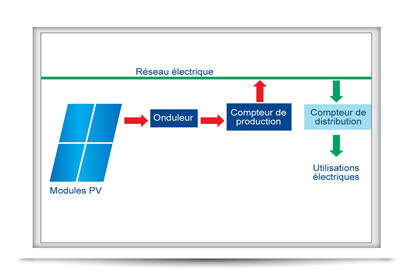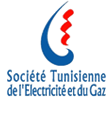Composition and functioning
Lucky we are to enjoy daily free sun shine; brilliant we will be if we make intelligent use and profit from such energy. Easy to do with a PV system installed on the roof of your house; thus you convert sunlight into electricity be it for direct consumption or to be reinvested into the public distribution network.
Constituents of photovoltaic power plant:
A photovoltaic power plant consists of three main elements are:
 The modules or solar panels : it is a set of electrically-connected photovoltaic cells made of semiconductor silicon-based structure with a poly or monocristallin, all depending on the techniques of production. The top and bottom layers are both doped differently to generate a positive and a negative charge; thus producing an electric field at the junction of these two layers. When sunlight hits the photovoltaic cells, electric current starts to flow through each plaque of silicon and the voltage is then generated via the metal contacts of the cells hence creating a direct electric power.
The modules or solar panels : it is a set of electrically-connected photovoltaic cells made of semiconductor silicon-based structure with a poly or monocristallin, all depending on the techniques of production. The top and bottom layers are both doped differently to generate a positive and a negative charge; thus producing an electric field at the junction of these two layers. When sunlight hits the photovoltaic cells, electric current starts to flow through each plaque of silicon and the voltage is then generated via the metal contacts of the cells hence creating a direct electric power. Inverters : T: the direct electric current originated from the solar cells cannot be directly injected into the public network. An inverter is needed to convert direct current into an alternative one of 230 volts used by the electric grid.
Inverters : T: the direct electric current originated from the solar cells cannot be directly injected into the public network. An inverter is needed to convert direct current into an alternative one of 230 volts used by the electric grid.
 Electric meter : the energy produced will be either consumed locally or injected into public distribution network. The grid connected systems require an electric meter that measures the produced quantity of energy injected into the network in kilowatt hours (kWh).
Electric meter : the energy produced will be either consumed locally or injected into public distribution network. The grid connected systems require an electric meter that measures the produced quantity of energy injected into the network in kilowatt hours (kWh).









